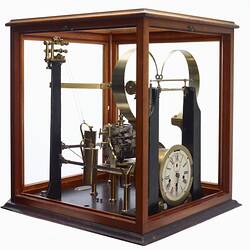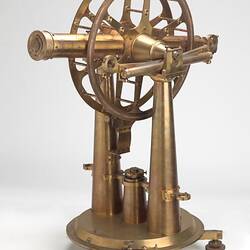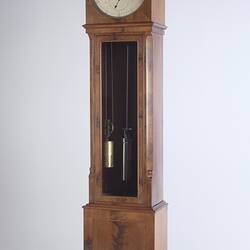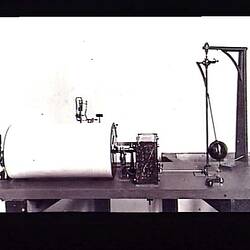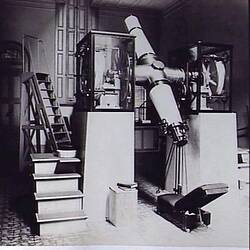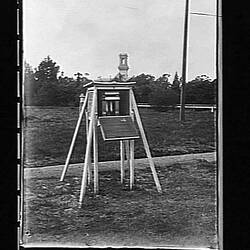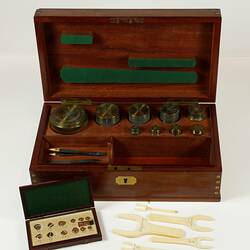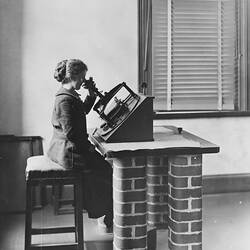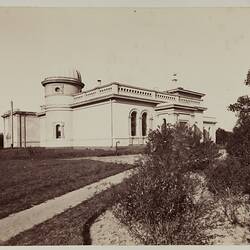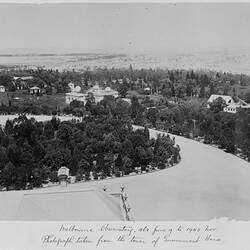Summary
Gray-Milne Seismograph, designed by Thomas Gray and John Milne in Tokyo and made by James White in Glasgow, No. 5, 1887.
A seismograph measures earth tremors.
This seismograph was purchased for the Melbourne Observatory in 1888 at a cost of 55 pounds, and erected on the foundation of the north collimator pier in the new transit room for the 8-inch transit telescope.
The seismograph never worked very satisfactorily. Government Astronomer Robert Ellery reported in 1897 that the instrument had only ever recorded one earthquake. See Ellery to Charles Todd, 6 September 1897 [Public Record Office of Victoria series VPRS 775, Vol 7] In 1899 the Observatory purchased a newer design by Milne.
Physical Description
In wooden case with glass windows. Comprises 3 weights mounted on movable arms which correspond to 3 axes of space. The resultant movement is recorded on a kymograph, operated by clockwork.
Significance
Thomas Gray and John Milne were British scientists working in Japan, who founded the Seismological Society of Japan, which funded the invention of seismographs. Milne invented the horizontal pendulum seismograph in 1880.
More Information
-
Collection Names
-
Collecting Areas
-
Acquisition Information
Donation from Melbourne Observatory, 1945
-
Maker
-
User
Melbourne Observatory, South Yarra, Greater Melbourne, Victoria, Australia, 1887-1901
-
Inscriptions
Oval maker's plate on base, marked: 'Gray & Milne's Seismograph, No. 5, James White, Glasgow'. Clock dial marked 'J. White, Glasgow'.
-
Classification
Physical sciences, Geophysics - seismology, Measuring equipment
-
Category
-
Discipline
-
Type of item
-
Overall Dimensions
60 cm (Length), 52 cm (Width), 60 cm (Height)
-
Keywords
Earthquakes, Geophysical Apparatus & Instruments, Seismographs

